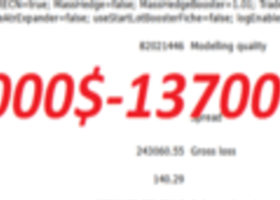Australian bond yields hit near 2-month high on hawkish Fed officials’ comments
The Australian government bonds plunged Monday as the United States Federal Reserve rate hike speculation gathered steam following hawkish comments from the Fed policymakers. Also, Bloomberg’s implied portability for a rate hike increased to 30 percent for the September policy meeting, up from 25 percent calculated at the end of last week.
The yield on the benchmark 10-year Treasury note, which moves inversely to its price, rose to near two-month high by 9-1/2 basis points to 2.116 percent and the yield on short-term 2-year also jumped 4-1/2 basis points to 1.611 percent at 05:00 GMT.
On Friday, the Boston Federal Reserve President Eric Rosengren (a voter in 2016) said that he sees a reasonable case for gradual rate increases and a failure to continue the path of gradual rate normalisation could shorten the recovery; history shows the difficulty of slowing the economy after waiting too long to tighten policy.
He further added that payrolls growth has been somewhat choppy of late, but the United States economy is performing quite well, has proven resilient to international risks, and is at/close to full employment.
Additionally, Fed Governor Daniel Tarullo, speaking on CNBC, said that he will comment on the timing of Fed rate increases, but wouldnt foreclose the possibility of a rise this year. Also, would want evidence that inflation will rise and can be sustained at 2 percent and answer to low-rate risks isnt necessary to hike. On balance his remarks seem to be on the side of holding off from tightening policy.
In addition, Dallas Fed President Robert Steven Kaplan said that the case for a rate hike has strengthened in the last few months, but the Fed can afford to be patient because neutral rates are low. He further added that low rates create distortions/imbalances and the Fed will debate this over the next few months. The ISM reports a little more negative than expected and does not think the economy is overheating, he added.
On Tuesday, the Reserve Bank of Australia’s bank board members decided to leave the cash rate unchanged at 1.50 percent, which was widely in line with expectations after having lowered it by 25 basis points in August. We foresee that the central bank is likely to ease further in November after it gets another read on inflation in late October. The RBA second last monetary policy meeting for 2016 is scheduled for November 2.
Third quarter consumer inflation data will be key in regards to future monetary policy expectations and it is not released until October and therefore although the RBA will likely leave policy unchanged at the upcoming October meeting. On the other hand, it is worth noting that if third quarter CPI disappoints, official cash rate cut is unavoidable.
Lastly, investors will remain keen to focus on the Thursday’s unemployment rate data, which is expected to remain unchanged at 5.7 percent in August period.
Meanwhile, the benchmark Australias S&P/ASX 200 index traded 1.95 percent lower to 5,205.5 by 05:00 GMT.


